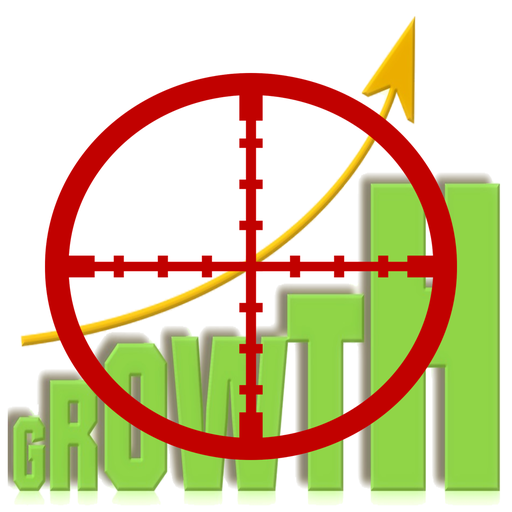Did you know that businesses leveraging data-driven marketing are six times more likely to achieve profitability year-over-year? Discover how data, when harnessed strategically, revolutionizes digital marketing and empowers truly driven marketing strategies. Moreover, data-driven marketing raises brand recognition by as much as 50%.
What You'll Learn:
Exactly what data-driven marketing means in today’s digital marketing landscape
How big data and predictive analytics empower actionable, measurable marketing strategies
Step-by-step best practices for transforming your marketing team’s approach
Top real-world success stories and how you can apply their lessons
Critical challenges, FAQs, and the future outlook for driven marketing

The Essence of Data-Driven Marketing in Modern Digital Marketing
Defining data-driven marketing: Data-driven marketing in the digital marketing landscape
Why data-driven marketing is essential for today’s digital marketing strategies
Role of big data within data-driven marketing
Data-driven marketing is not just a buzzword—it’s a fundamental shift in how marketing teams approach their work. In the digital marketing landscape, data-driven marketing means rooting every strategy, campaign, and decision in objective, measurable insights drawn from big data. Instead of relying on assumptions or outdated intuition, marketing teams analyze customer interactions, purchase behaviors, and real-time digital signals to optimize brand awareness, boost ROI, and deliver superior customer experiences. The impact of data-driven marketing stretches across every channel, from social media to email to paid advertising, enabling a more precise, targeted, and scalable approach.
Today, successful digital marketing strategies require harnessing the right data in marketing . The era of “spray and pray” advertising is replaced by analytics-driven campaigns where every dollar spent can be tracked, measured, and optimized. 87% of marketing professionals are united in their opinion that data-driven marketing is their most under-used asset while data-driven strategies provide anywhere from 5 to 8 times the ROI for companies that use those strategies. The role of big data in this transformation cannot be overstated. By aggregating and connecting customer data from disparate sources, big data allows marketers to identify hidden trends, segment audiences, and predict future behaviors—turning traditional marketing strategies into agile, results-focused initiatives. In this new paradigm, marketing work pivots from guesswork to strategic, evidence-based action.
"Without data, you're just another person with an opinion." – W. Edwards Deming

Elevating Marketing Strategies with Data in Marketing
How Data Fuels Modern Marketing Strategy Success
Using big data to drive results in marketing strategies
Comparing data-driven marketing to traditional marketing methods
The importance of predictive analytics in marketing strategy development
The integration of big data into modern marketing strategies has been a game changer. Big data makes it possible for organizations to uncover meaningful patterns from massive volumes of customer information—ranging from online behaviors to offline purchases. With this insight, marketing teams can shape strategies that meet customer expectations, fine-tune targeting, and increase the efficiency of every marketing campaign. For instance, combining social media trends, web analytics, and purchase histories helps brands design campaigns that speak directly to the right audience at precisely the right moment.
When you compare data-driven marketing to traditional marketing, the difference is dramatic. Traditional approaches relied heavily on generalizations or incomplete data, often leading to wasted ad spend or missed opportunities. In contrast, a data-driven method ensures that marketing decisions are informed by relevant data, minimizing risk and maximizing return on investment. Predictive analytics takes this one step further, equipping marketing teams with the tools to anticipate consumer needs, personalize offers, and proactively resolve issues—resulting in richer customer experiences and long-term loyalty.
The secret to a successful marketing strategy lies in leveraging data not only for insight, but also for continuous improvement. With predictive analytics , companies can model future campaigns, allocate budgets efficiently, and even predict overall market trends. This proactive approach to marketing work enables brands to stay ahead of competitors, delight customers, and foster innovation at every stage of the marketing process.
Comparative Analysis: Data-Driven Marketing vs. Traditional Marketing Approaches |
||
Aspect |
Data-Driven Marketing |
Traditional Marketing |
|---|---|---|
Decision Making |
Based on measurable data, analytics, and predictive models |
Relies on intuition, previous experience, or broad market studies |
Target Audience Engagement |
Personalized, segmented outreach leveraging customer data |
Generic messaging; limited personalization |
ROI Tracking |
Real-time analytics enable precise tracking and strategy optimization |
Challenging to attribute results and optimize spend |
Scalability |
Easily scales through automation and integrated data sources |
Manual and often limited reach |
Customer Experience |
Highly tailored, data-backed enhancements |
Standardized, limited adaptability |
Foundations: Gathering and Utilizing Data in Marketing
Identifying Valuable Big Data Sources for Driven Marketing
First-party, second-party, and third-party data in marketing
Harnessing data from digital marketing channels
Structuring your data management for optimal marketing analytics
The foundation of every successful data-driven marketing strategy lies in the sourcing and aggregation of valuable big data . A data source can include first-party data (your own customers’ data collected through CRM systems or digital touchpoints), second-party data (a trusted partner’s customer data), and third-party data (purchased from outside vendors and aggregators). First-party data, often gathered through website visits, social media engagement, and email interactions, gives your marketing campaigns the most accurate and relevant data possible. Second and third-party data help round out customer profiles and expand your reach into new audiences, but should always be managed for privacy and accuracy.
A marketing team seeking to get the most from their driven marketing must also ensure they’re harnessing a diversity of digital marketing channels—websites, email, mobile apps, and especially social media . Effective use of omni-channel data brings new clarity to the customer journey, helping brands identify pain points, track customer behavior across devices, and deliver consistency across touchpoints. To maximize the value of this information, it’s critical to implement robust data management practices. Streamlining data silos, integrating platforms, and enforcing quality standards all form the base for reliable marketing analytics .
Structuring your data management for optimal analytics involves not only amassing information but making it accessible, secure, and actionable. This might include investing in centralized analytics dashboards, leveraging customer relationship (CRM) tools, and employing dedicated technology to tie marketing data sources together. Marketers struggle primarily when their systems are fragmented or data is incomplete, so investing in infrastructure from the outset is a foundational requirement for driven marketing success.
Ensuring Data Quality for Marketing Analytics
Data cleansing best practices in data-driven marketing
Role of marketing analytics tools in refining customer data
Data quality is the linchpin of reliable marketing analytics . Data silos, outdated records, and inconsistent formats all undermine the accuracy of insights, leading to flawed marketing decisions. Best practices in data cleansing include regularly validating, deduplicating, and updating your datasets to ensure that your marketing team is working with only the most accurate information. A disciplined approach to data hygiene sets the stage for better audience segmentation, higher-performing campaigns, and true personalization.
Modern marketing analytics tools have made it easier than ever to refine customer data. These platforms can identify anomalies, unify disparate data sources, and automate the flagging and correction of problematic records. This means your marketing department can spend less time on manual data management and more time on strategy development and campaign execution. The end result: improved efficiency, actionable insight, and measurable increases in marketing ROI.
By implementing comprehensive data quality frameworks, marketers reduce costs, increase campaign effectiveness, and make better decisions at every step. The shift from raw data to clean, actionable information is the defining quality of organisations succeeding in data-driven marketing today.

Predictive Analytics: The Heart of Data-Driven Marketing
What Is Predictive Analytics in Marketing?
Features and functions of predictive analytics for marketing strategy
Use cases: Improving campaign targeting and customer personalization
Predictive analytics in marketing refers to the use of statistical models and AI algorithms to forecast future outcomes and behaviors. For a marketing team, this means being able to anticipate trends, predict customer actions, and optimize marketing campaigns before they unfold. Core functions might include churn prediction, lead scoring, and content performance forecasting—all critical in supporting data-driven decisions and improving the efficiency of every marketing strategy .
The impact of predictive analytics on campaign targeting and customer personalization is profound. Instead of serving generic messaging to broad audiences, predictive analytics empowers marketers to deliver tailored experiences that address customers’ needs in real time. For example, e-commerce companies use recommendation engines to present products a customer is most likely to purchase, while B2B marketers prioritize qualified leads based on buying signals. These use cases directly improve customer experience, increase conversion rates, and foster deeper engagement with the brand.
Deploying predictive analytics reinvents marketing campaigns by transforming historical and real-time data into forward-looking strategies. It elevates marketing analytics from telling you what has happened, to showing what will happen—and pointing toward the best course of action.
Big Data’s Impact on Predictive Marketing Analytics
Leveraging big data for enhanced marketing insights
Creating actionable marketing strategies through predictive analytics
Big data provides the raw material for predictive analytics, enabling marketing teams to make sense of complex customer journeys and shifting market dynamics. By pulling information from web analytics, transactional records, social media engagement, and even offline sources, marketers can model buying patterns, identify triggers, and surface opportunities that would otherwise go unnoticed. Enhanced insights mean that every dollar spent in digital marketing is more likely to drive measurable ROI.
Actionable marketing strategies emerge when predictive analytics turns big data into clear recommendations. Companies can optimize ad placement, personalize email content, and refine the timing of digital interactions for their target audience. The primary advantage is speed and agility; campaigns can be adjusted in real-time based on live data, not last week’s performance. This responsiveness is a cornerstone of modern, competitive driven marketing.
Ultimately, leveraging big data through predictive analytics is the key for marketing teams to deliver consistent, targeted, and profitable campaigns. It's the intersection of technology, strategy, and customer-centric thinking—all working together to build sustainable brand growth.

Crafting a Data-Driven Marketing Strategy: Steps and Best Practices
The First Step in Data-Driven Marketing: Setting Clear Objectives
Aligning data goals with overall business and digital marketing objectives
Common mistakes in defining marketing strategies for data-driven success
Every successful data-driven marketing strategy begins with well-defined objectives. Your marketing team must align the desired outcomes from data analysis with broader business goals—such as increased brand awareness, improved customer acquisition, or enhanced retention. Without clarity of purpose, marketing work is reactive rather than proactive, and resources are often wasted on metrics that don’t drive real value.
One common pitfall is pursuing too many disconnected objectives, diluting focus and reducing the impact of analytics. Effective data-driven strategies narrow their aim to a few key areas and build the supporting data infrastructure to monitor progress. Objectives should always be specific, measurable, and tied directly to core business outcomes, turning data analysis into actionable insight and ensuring that all marketing teams move toward the same vision for success.
By thoughtfully setting and revisiting objectives, marketing teams can avoid missteps and course-correct as needed—transforming data from a static resource into a dynamic driver of strategic growth.
Data Collection and Integration for Driven Marketing
Collecting relevant data across digital marketing platforms
Best practices for integrating and unifying big data sources
Data collection is a continuous process crucial to driven marketing . Marketing campaigns generate enormous volumes of information—including customer interactions, sales transactions, web analytics, and social media signals. To fully leverage these insights, brands must break down data silos and integrate information across platforms, ensuring a unified, 360-degree view of their audience.
Best practices for integrating big data sources include the adoption of centralized data warehouses, the use of application programming interfaces (APIs) for real-time data sharing, and the implementation of data governance best practices. These strategies not only enhance data accessibility but also improve data reliability and enable more sophisticated analytics. As marketing teams move toward more advanced uses of data, their ability to adapt quickly and innovate in response to market demands increases substantially.
Ultimately, well-orchestrated data collection and integration allows marketers to spot behavioral patterns, personalize messaging, and launch more relevant campaigns across all digital channels for maximum impact.
Executing, Measuring, and Optimizing the Strategy
KPIs and marketing analytics for data-driven marketing
A/B testing, attribution models, and actionable insights for optimization
Execution in a data-driven marketing context is not a static “set-and-forget” exercise. Campaigns are continuously tracked using key performance indicators (KPIs) linked to the initial objectives—whether that’s lead generation, sales conversions, or engagement rates. Marketing analytics platforms monitor every touchpoint, translating millions of data points into dashboards and actionable insight for instant course correction.
Optimization is ongoing. A/B testing helps refine messages, offers, and creative assets by objectively measuring what works best with real audiences. Advanced attribution models connect conversions back to specific actions, enabling marketers to allocate budgets more efficiently and maximize return on investment. This iterative cycle of measurement and improvement drives ongoing growth and ensures that future campaigns consistently outperform past efforts.
The hallmark of a successful strategy is the ability to turn insight into action—testing, adapting, and driving measurable gains at every step of the customer journey. This is how modern marketing delivers repeatable, scalable results.

Personalization and Customer Experience Through Data-Driven Marketing
How Data Drives Customer Experience in Digital Marketing
Using big data and marketing analytics to enhance personalization
Segmentation: Delivering the right message at the right time
Examples of impactful customer experience transformations
In today’s marketplace, customer experience is king. Big data and marketing analytics empower marketers to deliver exceptional, personalized experiences that resonate on an individual level. Instead of a one-size-fits-all approach, brands can understand customer preferences, predict needs, and tailor messaging to each person’s unique journey. This drives greater engagement, deeper loyalty, and higher conversion rates across every channel of digital marketing.
Segmentation is at the heart of effective personalization. By grouping customers based on precise criteria—like purchasing behavior, demographics, or digital touchpoints—brands can deliver the right message at the right time, increasing the likelihood of a positive response. For example, automating abandoned cart emails in e-commerce or presenting customized content recommendations in B2B marketing creates seamless, value-rich interactions.
Impactful customer experience transformations are everywhere. Netflix’s recommendation system, for instance, uses viewing history and predictive analytics to deliver highly relevant content suggestions, improving retention and user satisfaction. Similarly, major retailers deploy real-time offers and dynamic pricing based on shopper behavior, proving that effective use of data in marketing leads to measurable, customer-centric innovation.
Overcoming Privacy and Trust Challenges
Transparent data usage in marketing analytics
Adhering to privacy regulations in driven marketing
As data-driven marketing grows more sophisticated, so do concerns around privacy and trust. Customers expect brands to use their data responsibly and transparently, with clear communication about what’s being collected and how it’s used. Transparency in marketing analytics not only builds credibility, but also fosters stronger, trust-based relationships with audiences.
Adhering to privacy regulations—such as GDPR or CCPA—is now a fundamental requirement for driven marketing . Marketing teams must implement consent mechanisms, securely store sensitive data, and regularly audit their processes for compliance. By demonstrating a commitment to ethical practices, brands not only reduce risk but also position themselves as responsible leaders in the evolving digital marketing landscape.
The ultimate goal is to balance powerful personalization with respect for individual privacy, ensuring that data-driven innovation never comes at the expense of customer trust.

Technological Tools and Platforms for Data-Driven Marketing Success
The Marketing Technology Stack: Essential Tools for Driven Marketing
Data management platforms, CRM, and marketing automation
Marketing analytics platforms for strategy optimization
A robust marketing technology stack forms the backbone of successful data-driven marketing strategies . Data management platforms (DMPs) aggregate and segment customer information, while Customer Relationship Management (CRM) systems store detailed profiles and track every customer interaction. Together with marketing automation tools, brands can deliver personalized outreach, nurture leads, and manage campaigns efficiently at scale.
Marketing analytics platforms are equally essential for continuous strategy optimization. These tools translate massive quantities of big data into charts, trends, and actionable dashboards, making it easy for executives and front-line teams alike to track KPIs, evaluate results, and course-correct in real time. Modern marketing stacks are built to be flexible, integrating seamlessly with social media, search platforms, and advertising channels—creating a holistic, insight-driven approach to digital marketing.
By thoughtfully combining these technologies, marketers unlock new levels of precision, agility, and creativity—driving results that were previously unattainable in traditional marketing models.
AI and Machine Learning in Data-Driven Digital Marketing
Automating marketing strategies through predictive analytics
Real-world results: Big data meets artificial intelligence
AI and machine learning have brought true transformation to data-driven digital marketing . These technologies automate key aspects of marketing strategy—such as lead scoring, customer segmentation, and campaign optimization—using predictive analytics to make decisions that previously required manual input. The result is faster, smarter, and far more scalable marketing work.
Real-world use of AI and big data is abundant. Retailers employ AI-driven chatbots to deliver instant, context-aware support; B2B organizations use machine-learning-powered lead nurturing sequences to identify the most promising prospects. These advances aren’t just theoretical—they’ve led to documented increases in sales, customer retention, and brand awareness, proving that AI’s application in driven marketing is both practical and profitable.
The fusion of AI, machine learning, and big data is a signpost for the future of digital marketing, helping brands anticipate, adapt, and evolve in an increasingly competitive landscape.

Measuring ROI in Data-Driven Marketing
Key Metrics for Driven Marketing Performance
Customer lifetime value, retention rates, and marketing ROI
Tying KPIs to digital marketing and business objectives
Measuring ROI in data-driven marketing is both a science and an art. Key metrics include customer lifetime value (CLV), retention rates, conversion rates, and overall marketing ROI. By mapping these indicators to digital marketing objectives—such as growing brand awareness or expanding into new customer segments—teams ensure their tactics are always in sync with business growth.
The best-performing organizations continuously monitor KPIs, using them as a north star for strategy refinement. This feedback loop empowers marketing leaders to justify budgets, prioritize high-impact initiatives, and make faster, evidence-based decisions—even in rapidly shifting market environments.
Ultimately, tying the right metrics to marketing work fosters accountability, drives efficiency, and ensures every campaign contributes directly to broader organizational success.
Presenting Marketing Analytics: Dashboards and Reporting for Data-Driven Success
Visualizing big data with interactive dashboards
Continuous optimization through data-driven insights
The visualization of marketing analytics has advanced radically in the era of driven marketing . Interactive, cloud-based dashboards now offer instant access to performance data, letting teams drill down from macro trends to campaign-specific results in seconds. This transparency accelerates decision making and enables real-time collaboration across marketing departments.
Continuous optimization flourishes when actionable insights are shared widely—not siloed in individual teams. Dashboards bring together KPIs from digital advertising, social media, email campaigns, and more, providing “single-pane-of-glass” visibility into what’s working. Using these analytics, marketers iterate quickly—testing, learning, and evolving strategies for maximum impact.
Modern reporting is less about static spreadsheets and more about live, shareable platforms that power agile, accountable, and results-driven marketing.

Real-World Examples and Success Stories of Data-Driven Marketing
Case Studies: How Top Brands Achieved Marketing Strategy Supremacy
Big data and predictive analytics in global campaigns
Measurable impacts on customer experience and ROI
Global brands like Netflix, Amazon, and Spotify have set the benchmark for data-driven marketing strategy . Netflix leverages viewing history and predictive analytics to refine its recommendation engine, leading to increased engagement and subscriber retention. Amazon’s sophisticated use of big data underpins dynamic pricing and personalized product suggestions, directly impacting revenue and customer satisfaction.
These global campaigns show that when big data and predictive analytics are at the heart of strategy, marketers can not only enhance customer experience but also achieve tremendous improvements in measurable business outcomes—such as conversions, retention, and brand loyalty.
The lesson: investing in the right analytics and acting on marketing data consistently delivers competitive advantage and long-term success.
Data-Driven Content Marketing in Action
Examples of content customization and outcome-driven marketing
Leading brands use data-driven content marketing to personalize interactions at scale. For example, Spotify’s “Wrapped” campaign compiles user listening data into shareable insights, driving massive social media buzz and user delight. Similarly, The New York Times employs real-time audience analytics to optimize headlines, images, and story placement across its digital platforms.
These examples prove that content fueled by marketing analytics outperforms generic campaigns. It not only delivers higher engagement and conversion rates, but also deepens brand loyalty by making the customer feel truly understood.
By embracing personalization and data-backed decision making, marketers unlock the true potential of their content strategy.
Lessons Learned from Data-Driven Failures and Pivots
Common pitfalls and how to avoid them in your marketing strategies
Not every data-driven campaign is an instant success. Common failures often stem from poor data quality, lack of integration, or misaligned objectives. For instance, over-segmenting audiences can lead to fragmented messaging, while underestimating privacy concerns risks damaging customer trust. These experiences underscore the importance of data governance and a clear strategic vision.
To avoid these pitfalls, brands should invest in strong data infrastructure, adopt transparent practices, and stay nimble—quickly pivoting strategies in response to real-time analytics and customer feedback.
Ultimately, the most successful marketing teams are those that transform failures into learning opportunities, driving iterative improvement and long-term growth.
Addressing People Also Ask: Core Data-Driven Marketing Questions
What is a data-driven marketing strategy?
A data-driven marketing strategy uses data analytics, big data, and predictive models to inform every aspect of the marketing process, from audience targeting to campaign optimization, resulting in more effective and measurable digital marketing outcomes.
What is data-driven content marketing?
Data-driven content marketing employs insights from marketing analytics, big data, and customer behavior to create personalized and optimized digital content, driving higher engagement and conversion rates.
What is a data-driven example?
An example of data-driven marketing is Netflix’s recommendation engine, which uses viewing data and predictive analytics to suggest content personalized for each user, improving the customer experience and increasing viewer retention.
What is the first step in data-driven marketing?
The first step in data-driven marketing is establishing clear objectives linked to your overall marketing strategy, identifying what you want to accomplish and which key metrics will signify success for your digital marketing campaigns.
Essential Frequently Asked Questions on Data-Driven Marketing
What are the main benefits of data-driven marketing for digital marketing strategies?
Data-driven marketing empowers brands to make smarter marketing decisions, boost ROI, increase audience targeting accuracy, and deliver highly personalized customer experiences. It allows for continuous optimization and proof of marketing effectiveness.How can big data improve customer experience and marketing analytics?
Big data aggregates vast amounts of customer information, giving marketing teams deeper insight into preferences, behaviors, and touchpoints. This enables enhanced segmentation, predictive personalization, and more effective campaign optimization using marketing analytics tools.What challenges might brands face when implementing data-driven marketing?
Common challenges include managing data quality, integrating siloed systems, staying compliant with privacy regulations, and keeping up with technological changes. Effective solutions require investment in the right tools, clear processes, and ongoing staff training.
Checklist: Must-Do Actions for Data-Driven Marketing Success
Define clear marketing objectives aligned with business goals
Invest in the right tools for data, analytics, and automation
Prioritize data quality and seamless integration
Continuously measure, analyze, and optimize results
Stay informed about privacy regulations and best practices
Critical Takeaways and the Future Outlook for Data-Driven Marketing
Summing up the newfound power of big data in digital marketing
Emerging trends: Artificial intelligence and customer-centric strategies
Driving long-term success with data-driven marketing strategy and analytics
Take Action: Use these proven strategies and best practices to transform your marketing into a results-focused, analytics-powered engine for growth—because the future of digital marketing is data-driven.
Are Your Struggling to make All of your Marketing Strategies work together Seamlessly and Effortlessly? Gain Traction and Engage with Prospects by Clicking the Following Link and Get our Ultimate Guide for Building a Content Marketing Strategy for Small Business.
To deepen your understanding of data-driven marketing, consider exploring the following resources:
“Data Driven Marketing | Salesforce US” : This comprehensive guide delves into the integration of data analytics within marketing strategies, highlighting the benefits and challenges of a data-driven approach. ( salesforce.com )
“What Is Data-Driven Marketing & Why Is It Important?” : This article provides a detailed overview of data-driven marketing, discussing its significance, benefits, and the challenges marketers may face when implementing such strategies. ( semrush.com )
These resources offer valuable insights into the principles and practical applications of data-driven marketing, equipping you with the knowledge to enhance your marketing strategies effectively.
 Add Row
Add Row  Add
Add 




Write A Comment